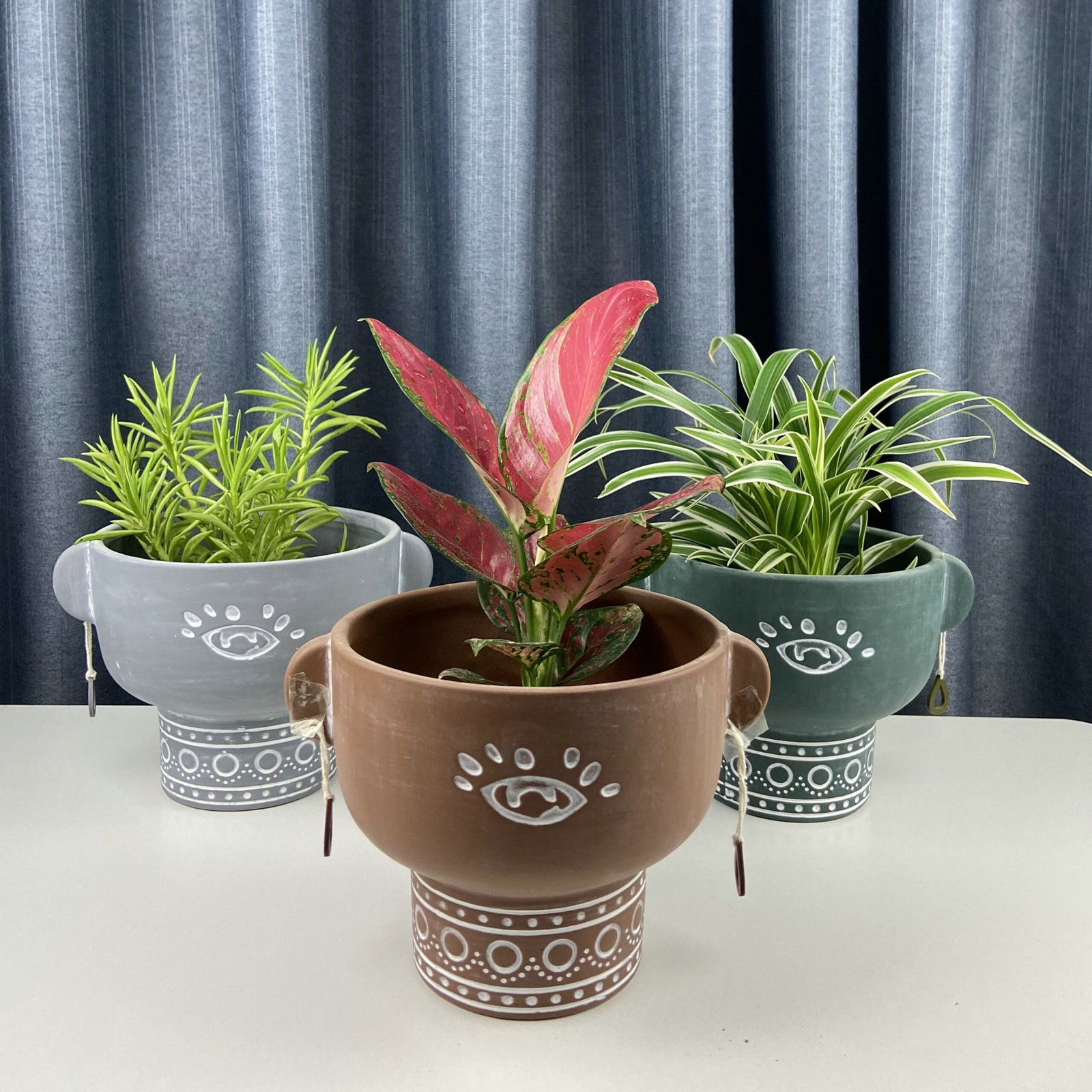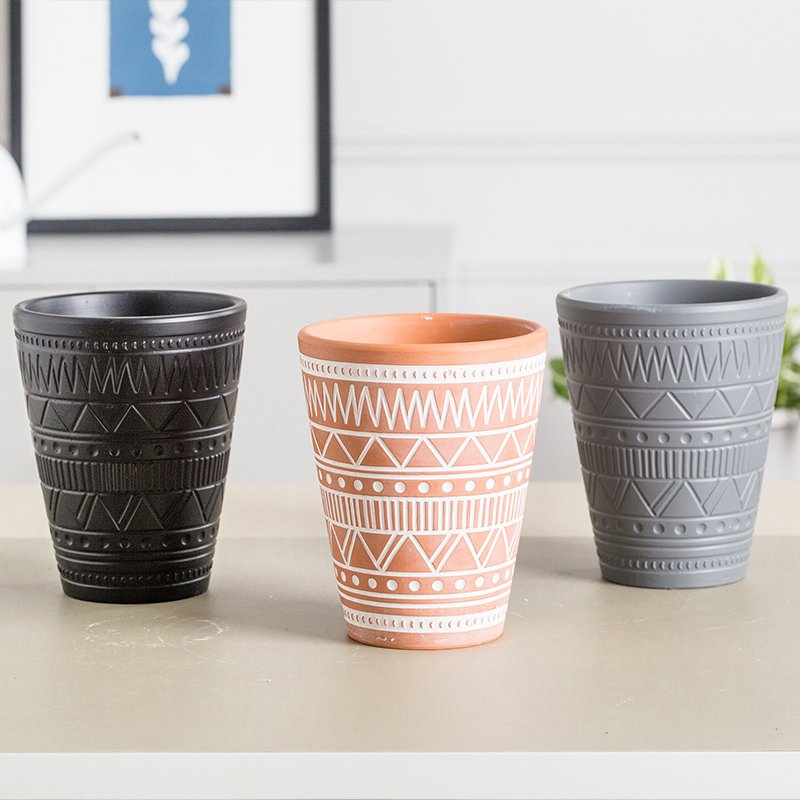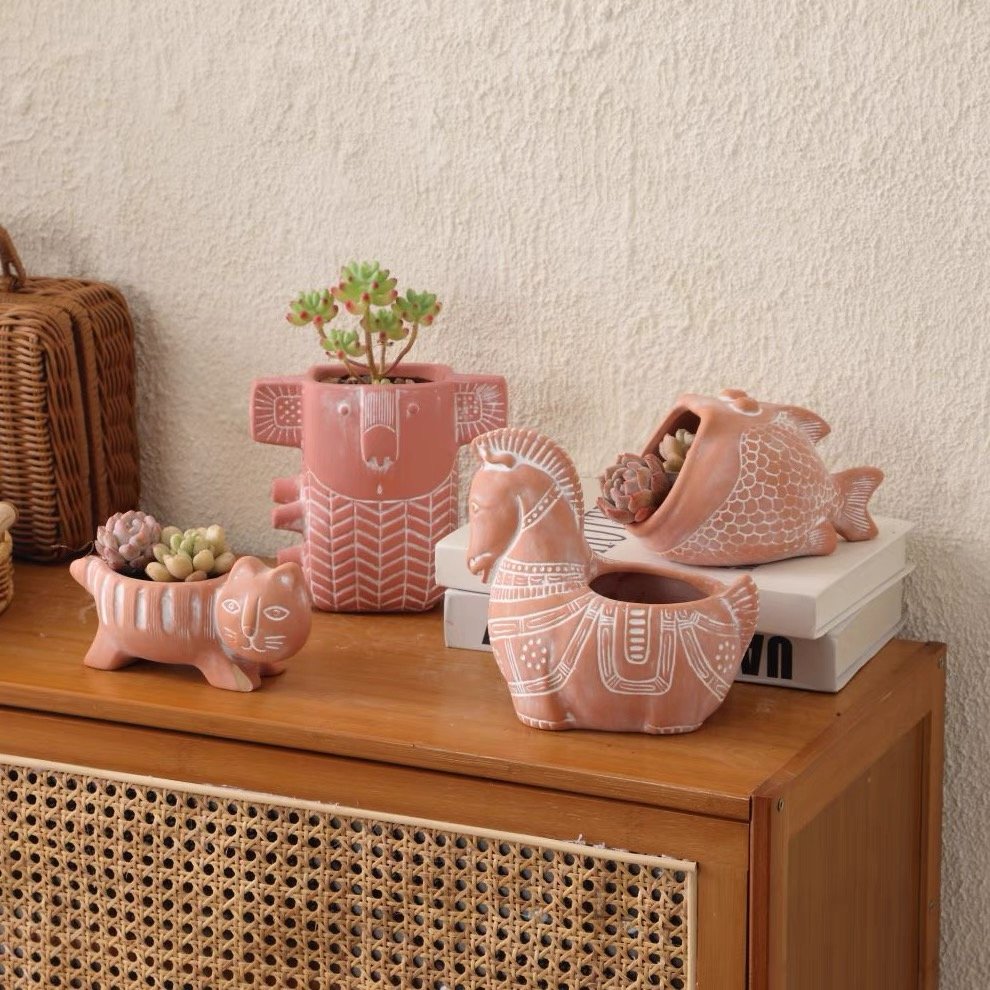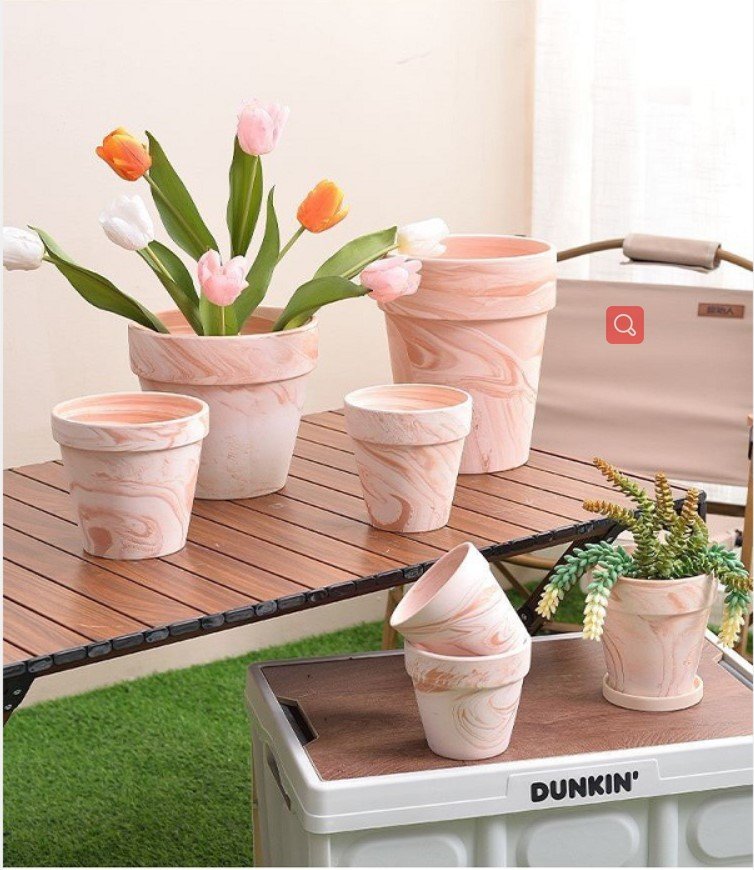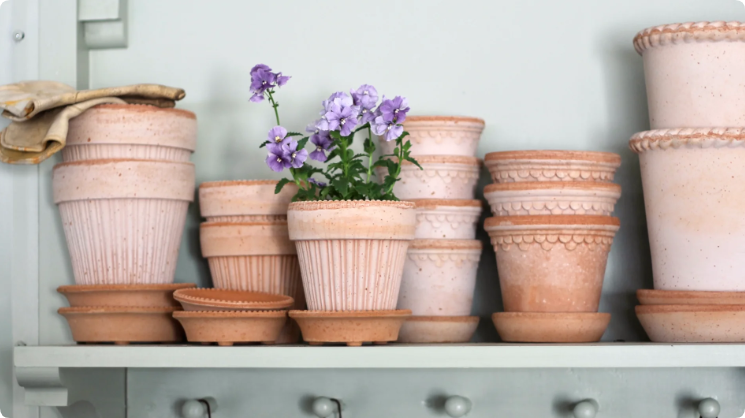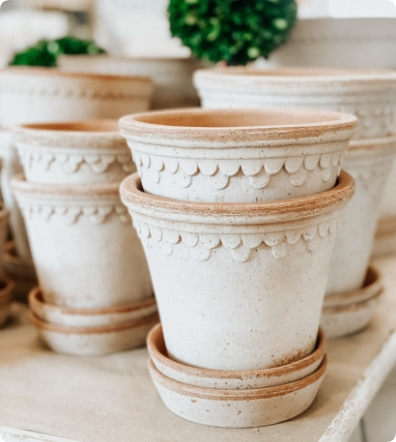In recent years, vintage-style home décor has seen a resurgence, with terracotta pots playing a pivotal role in creating rustic and classic interiors. For B2B purchasers, understanding how to achieve that weathered, aged look on terracotta pots can significantly influence procurement decisions. Whether for high-end retailers, boutique stores, or bulk supply chains, ensuring terracotta products meet the aesthetic demands of a vintage trend is essential.
In this guide, we will explore several techniques to make terracotta look vintage, how these methods affect procurement and production costs, and offer expert advice on sourcing the best terracotta products to fit this popular style.
1. Why Vintage-Style Terracotta Pots Are Popular
Terracotta has a long history in gardening, dating back to ancient civilizations. Its warm, earthy tones and breathable qualities make it ideal for plants. However, modern trends favor terracotta pots that look aged or vintage, offering a sense of timelessness and authenticity in garden décor.
Key Reasons for Popularity:
- Aesthetic Appeal: Vintage-style terracotta adds a rustic charm to both indoor and outdoor spaces.
- Durability: Well-made terracotta, particularly when treated for an aged appearance, remains sturdy and long-lasting.
- Breathability: Terracotta’s porous nature ensures optimal airflow to plant roots, enhancing plant health.
B2B purchasers should consider these factors when sourcing products that cater to the growing demand for vintage-style pots.
2. Techniques to Achieve a Vintage Look on Terracotta
Achieving a vintage look on terracotta can be done through several methods, each offering different textures, finishes, and effects. The following sections outline common techniques used in the production of aged terracotta.
2.1. Natural Weathering
One of the simplest ways to give terracotta pots a vintage appearance is by allowing them to weather naturally. Exposing pots to outdoor elements such as rain, wind, and sunlight over time will naturally create an aged, worn look. This method is low-cost but can take months to achieve a noticeable effect.
Pros:
- Eco-friendly: No chemicals or additives are used.
- Authenticity: Provides a truly natural aged look.
Cons:
- Time-consuming: Takes time, which may not align with fast production cycles.
- Uncontrollable results: The outcome may vary depending on climate conditions.
2.2. Lime Wash Treatment
Lime wash, a mixture of water and calcium hydroxide, is a popular technique for creating a vintage effect on terracotta. This wash leaves a chalky residue on the surface of the pot, giving it an aged and faded look. Pots are usually soaked in the lime wash solution and left to dry, and the process can be repeated to deepen the effect.
Pros:
- Customizable: Multiple layers can create different levels of aging.
- Fast process: Results are visible within a few hours or days.
Cons:
- Durability concerns: The lime wash may wear off over time, especially in humid environments.
2.3. Paint and Distress Method
This technique involves applying paint to the surface of the terracotta pot and then distressing it to reveal the natural clay beneath. Chalk paint is often used, followed by sanding or scraping to create a weathered appearance. This method can be combined with wax treatments to enhance the antique look.
Pros:
- Highly customizable: Can create different levels of distressing.
- Immediate results: Quick turnaround for vintage-looking pots.
Cons:
- Material costs: Requires additional materials such as paint and brushes.
- Labour-intensive: Needs manual work, increasing production time.
2.4. Moss and Algae Aging
This method involves applying a mixture of buttermilk or yogurt and moss spores to the surface of the terracotta pots. Over time, the moss will grow, creating a natural patina and aged look. This technique is particularly popular for outdoor garden centers and nurseries that want to achieve a naturally aged aesthetic.
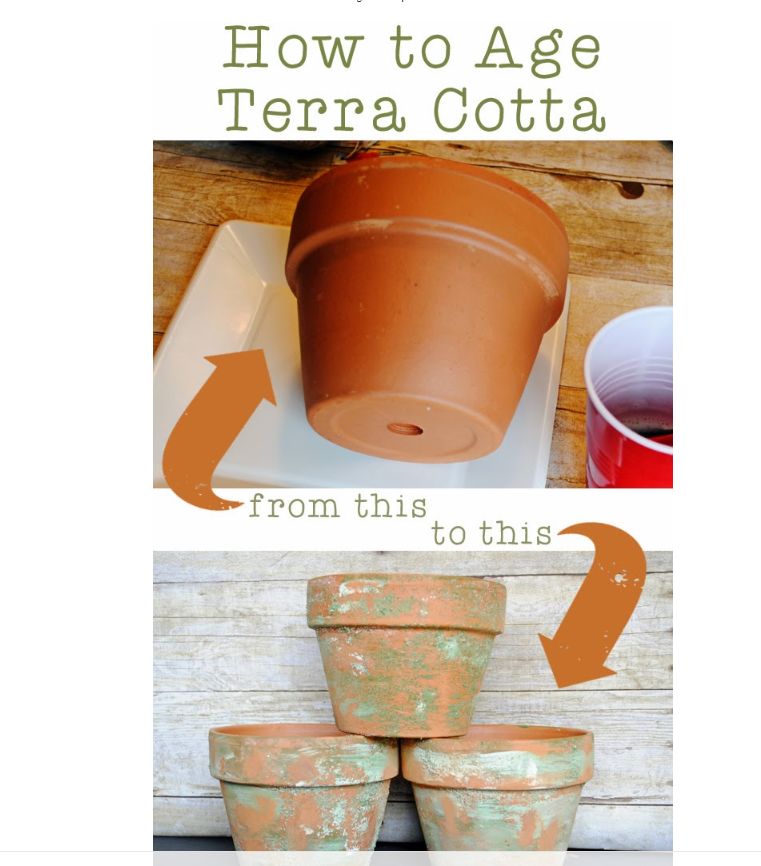
Pros:
- Natural appeal: Provides a lush, green-aged look that enhances the vintage effect.
- Unique outcomes: Each pot will have a unique aging pattern.
Cons:
- Time and care: Requires regular watering and light exposure for the moss to grow.
- Not suitable for all climates: Growth can be inconsistent in dry or cold areas.
2.5. Acid Wash
Acid washes using diluted hydrochloric acid can be used to speed up the aging process of terracotta. The acid eats away at the pot’s surface, giving it a rough, worn appearance. This method can be done in a controlled way to avoid over-etching the surface.
Pros:
- Quick and effective: Instant results with minimal labor.
- Consistent results: Can be repeated for uniform aging across multiple pots.
Cons:
- Safety hazards: Requires handling of strong chemicals.
- Damage potential: Overuse can weaken the pot’s structural integrity.
Comparison of Aging Techniques
| Method | Time Required | Cost | Durability | Environmental Impact | Suitability for Mass Production |
|---|---|---|---|---|---|
| Natural Weathering | Months | Low | High | Minimal | Limited |
| Lime Wash | Days | Medium | Medium | Low | Suitable |
| Paint & Distress | Immediate | High | Medium | Moderate | Suitable with labor investment |
| Moss & Algae | Weeks | Low | Medium | High | Limited |
| Acid Wash | Immediate | Medium | Medium | Moderate | Suitable with safety measures |
3. Procurement Considerations for B2B Purchasers
For B2B purchasers, understanding the pros and cons of each method is essential to selecting the right terracotta products for your market. Below are some key considerations when sourcing vintage-style terracotta pots.
3.1. Production Costs and Time
Different aging techniques come with varying production costs and timeframes. For example, natural weathering may be less expensive but takes time, while acid washing is faster but involves more handling. B2B purchasers should balance these factors based on market demands and order timelines.
3.2. Customization Options
Some clients may prefer a more subtle vintage look, while others might want a highly distressed appearance. Collaborating with manufacturers who can offer customization options—such as different levels of distressing or bespoke finishes—can make your product offering more competitive.
3.3. Sustainability
With increasing awareness of environmental issues, many buyers prefer eco-friendly products. Methods such as natural weathering and moss aging align with sustainable production practices, which could appeal to environmentally conscious clients.
3.4. Bulk Order and Shipping
Vintage-style terracotta pots are often fragile, especially those that have been distressed. Ensure the supplier offers durable packaging options that protect the products during shipping. Also, inquire about whether they have experience in bulk orders to guarantee the smooth fulfillment of large-scale purchases.
4. Market Trends and Demand for Vintage Terracotta Pots
The global market for vintage-style garden products has been growing, with terracotta pots being a key component of this trend. Understanding the following market dynamics can help B2B purchasers make informed procurement decisions:
- Growing Popularity of Cottagecore: The rise of the “cottagecore” aesthetic, which emphasizes rural and vintage elements, has driven the demand for aged, rustic-looking terracotta products.
- Demand for Sustainable Products: More consumers are looking for sustainable, eco-friendly options. Naturally aged and moss-covered terracotta pots resonate with this demographic.
- Regional Preferences: In markets like Europe and the United States, the demand for vintage-style garden décor is strong, while other regions may prefer sleek, modern designs. Understanding regional trends is crucial for B2B purchasers sourcing terracotta products.
5. Final Tips for Sourcing Vintage-Style Terracotta Pots
As a B2B purchaser, here are a few final tips to ensure successful procurement of vintage-style terracotta pots:
- Partner with Experienced Manufacturers: Ensure your supplier has experience with vintage-style production techniques to maintain quality and consistency.
- Request Samples: Always request product samples before placing a bulk order, especially if customization is involved.
- Negotiate Customization and Bulk Discounts: Many suppliers offer bulk discounts and are open to custom orders. Be sure to negotiate for the best terms.
- Consider Lead Time: Vintage-style treatments can take longer to produce, so account for additional lead time when placing orders.
Conclusion
Vintage-style terracotta pots are a valuable addition to any garden décor product lineup. By understanding the various techniques to achieve a weathered, antique look and considering key procurement factors, B2B purchasers can ensure they are sourcing the best products to meet market demand. Whether you’re looking for lime-washed pots, naturally aged pieces, or moss-covered designs, working with the right supplier will help you meet customer expectations and stay ahead in this growing market.
For expert assistance in sourcing high-quality terracotta pots, visit Hale Planter to explore a wide range of customizable options that can meet your business needs.

